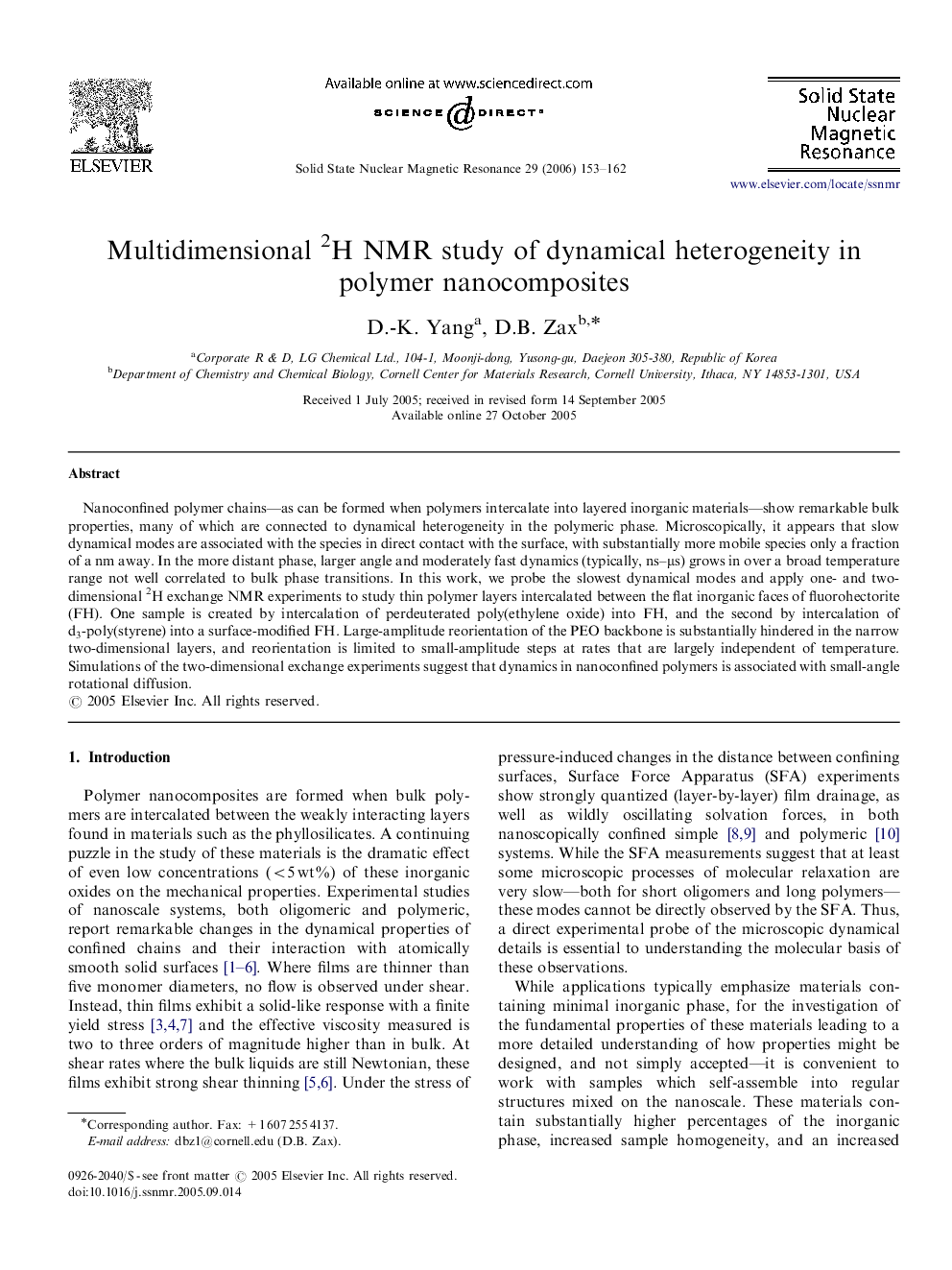| Article ID | Journal | Published Year | Pages | File Type |
|---|---|---|---|---|
| 5420986 | Solid State Nuclear Magnetic Resonance | 2006 | 10 Pages |
Abstract
Nanoconfined polymer chains-as can be formed when polymers intercalate into layered inorganic materials-show remarkable bulk properties, many of which are connected to dynamical heterogeneity in the polymeric phase. Microscopically, it appears that slow dynamical modes are associated with the species in direct contact with the surface, with substantially more mobile species only a fraction of a nm away. In the more distant phase, larger angle and moderately fast dynamics (typically, ns-μs) grows in over a broad temperature range not well correlated to bulk phase transitions. In this work, we probe the slowest dynamical modes and apply one- and two-dimensional 2H exchange NMR experiments to study thin polymer layers intercalated between the flat inorganic faces of fluorohectorite (FH). One sample is created by intercalation of perdeuterated poly(ethylene oxide) into FH, and the second by intercalation of d3-poly(styrene) into a surface-modified FH. Large-amplitude reorientation of the PEO backbone is substantially hindered in the narrow two-dimensional layers, and reorientation is limited to small-amplitude steps at rates that are largely independent of temperature. Simulations of the two-dimensional exchange experiments suggest that dynamics in nanoconfined polymers is associated with small-angle rotational diffusion.
Related Topics
Physical Sciences and Engineering
Chemistry
Physical and Theoretical Chemistry
Authors
D.-K. Yang, D.B. Zax,
